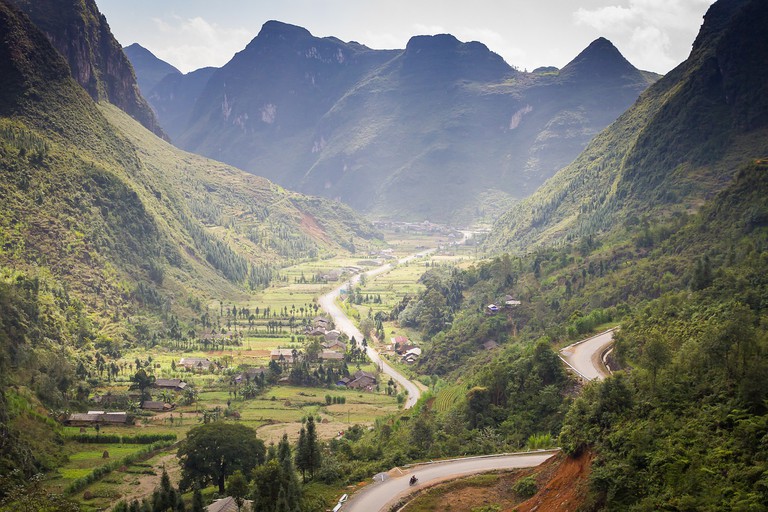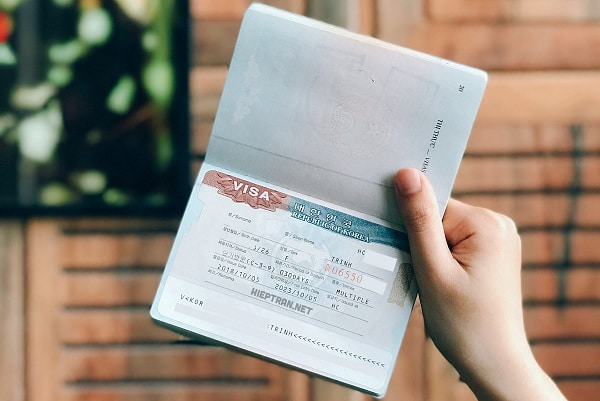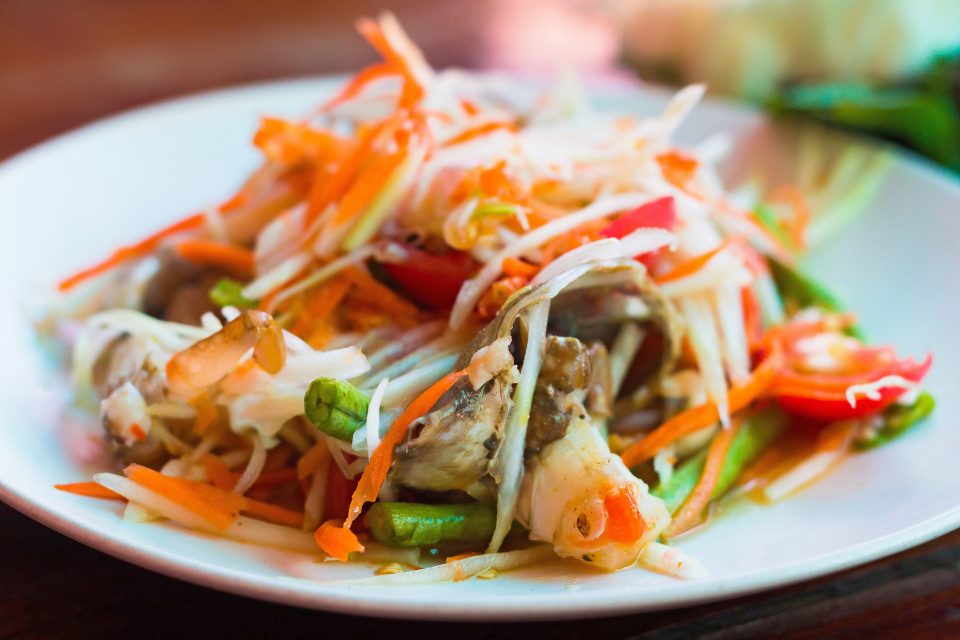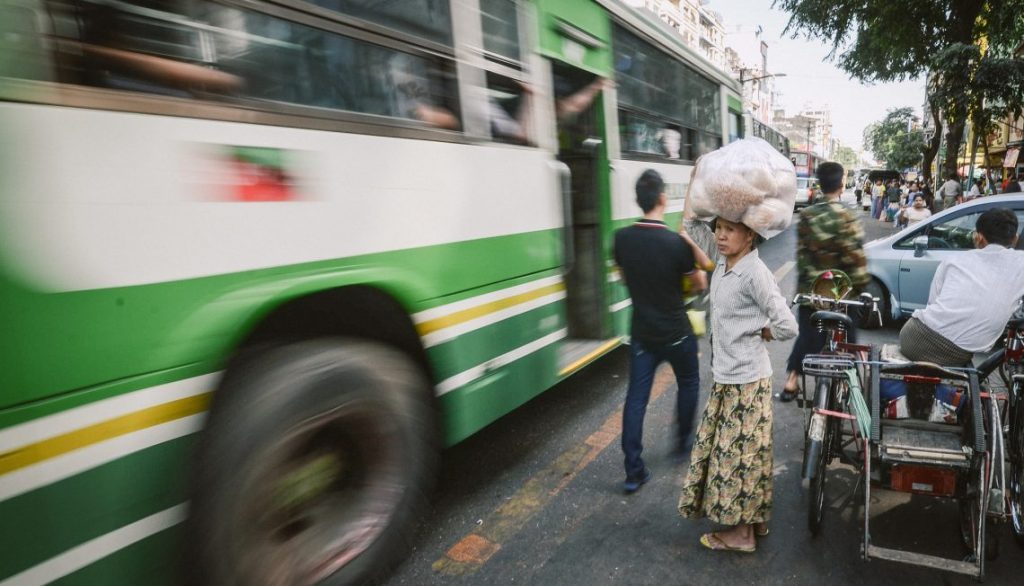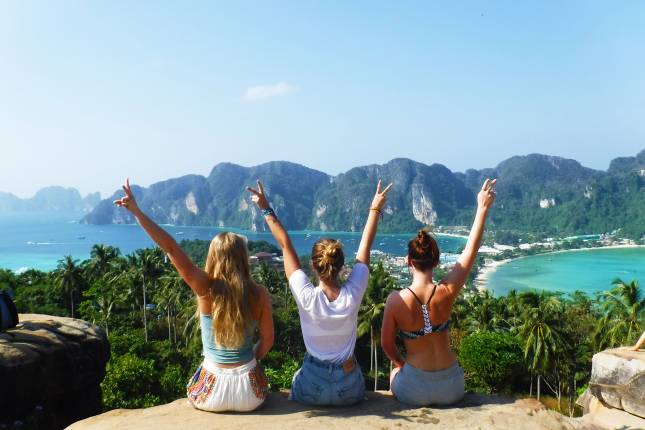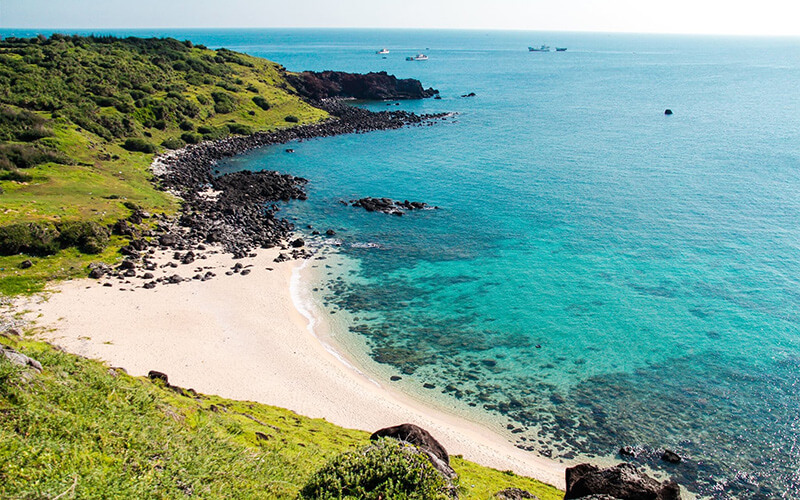Highlights of Laos 11 Days, 10 Nights
Full Itinerary
Upon arrival to Luang Prabang, our guide and driver will be waiting to transfer you in private car to the hotel for check in. After checking in to the hotel, time to relax.
Overnight in Luang Prabang
(Check in time is 14.00 – Early check in is upon availability)
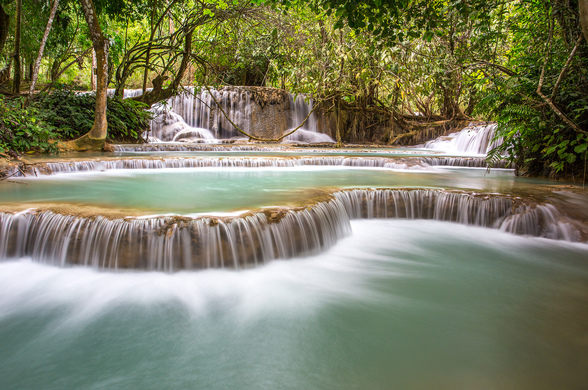

Rise early this morning to witness the Buddhist ceremony of Takbat, when the monks of Luang Prabang’s monastic communities collect alms from locals. These lines of silent saffron robe-clad monks will be an enduring image of your trip. See Wat Sene and the National Museum:
Wat Sene: A Buddhist temple (wat), located in Luang Prabang, Laos. It was built in 1718 by King Kitsarath with 100 000 stones from the Mekong River. It literally means ‘Temple of a 100,000 treasures’. It was restored in 1957 commemorating the Buddha’s birth 2,500 years earlier. National Museum – Built in 1904 in the French colonial era, the original building was the Royal Palace but was later converted into a museum.
National Museum: Built in 1904 in the French colonial era, the original building was the Royal Palace but was later converted into a museum.
Visit the traditional H’mong village of Ban Na Ounae, before walking to the cascading turquoise waters of delightful Kuang Si Waterfalls for a picnic lunch. Kuang Si is a breathtaking waterfall you shouldn’t miss. A three tier waterfall about 29 kilometres south of Luang Prabang. The falls begin in shallow pools atop a steep hillside. These lead to the main fall with a 60 metres cascade. The falls are accessed via a trail to a left of the falls. Water collects in numerous turquoise blue pools as it flows downstream. The many cascades that result are typical of travertine waterfalls. There are walkways and bridges for your enjoyment. Most of the pools are open to swimming please remember to bring along your swimsuit and a towel. Changing rooms are available on site. Enjoy your time in Kuang Si then return to Luang Prabang.
Overnight in Luang Prabang
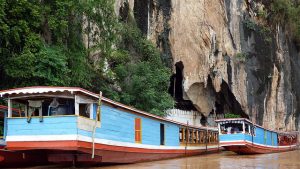
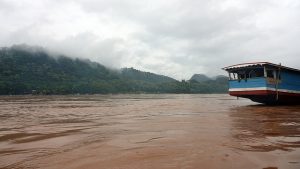
After breakfast, start the morning with a visit to Wat Xieng Thong, the most photographed temple in the city. Afterwards, board a traditional wooden boat for a relaxing cruise along the mighty Mekong River. Enjoy the beautiful passing scenery before reaching the Pak Ou Caves.
Sitting at the confluence of the Mekong and Nam Ou Rivers, these twin caves are carved into the surrounding limestone cliffs, filled with hundreds of ancient Buddha images and statues. After visiting the caves, moor near the cliffs for a local-style lunch, featuring a range of traditional Lao dishes. After lunch, cruise back to Luang Prabang.
Returning in the afternoon, climb to the top of Phousi Hill and enjoy panoramic views of the city and Wat Mai, with its beautiful gilded facade. Later visit Wat Visoun, one of the oldest temples in the city, followed by Wat Aham.
As the day comes to a close, participate in a traditional Baci ceremony. These ceremonies are deeply rooted in Lao culture, and are used to celebrate a special occasion- whether a wedding, an annual festival, or as a welcome.
Overnight in Luang Prabang
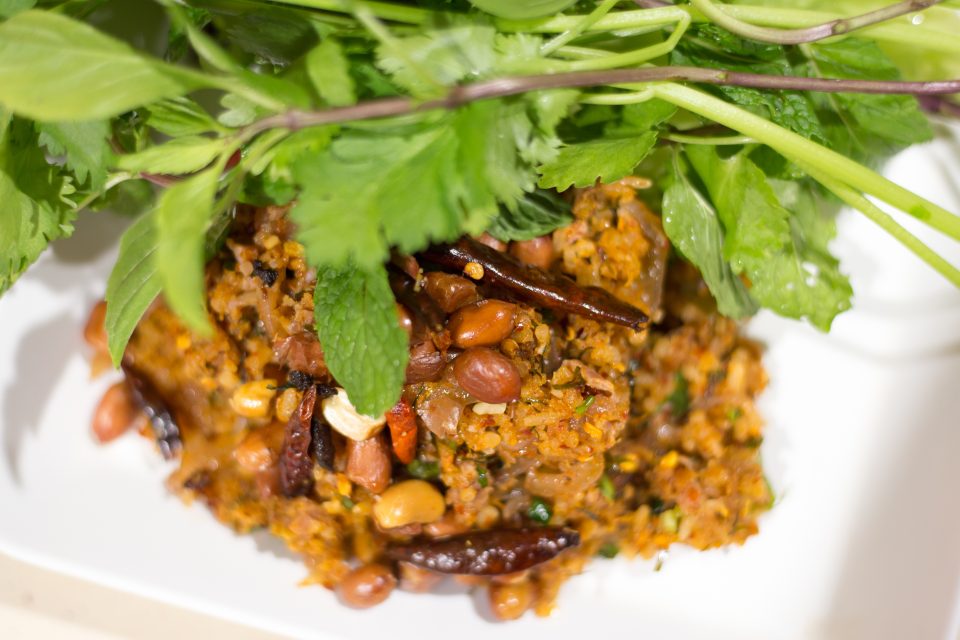

Today with the help of your private guide, driver and private vehicle you will get to explore Breakfast at hotel then you’ll travel through beautiful rice fields and sugar palms before reaching out Kampong Chhnang town to see the work of making traditional pottery. The city of Kompong Chhnang is split between the sleepy centre and the lively dockside on the Tonle Sap River.
Traditional Angkorian pottery has been resurrected in Kampong Chhnang, with villagers mixing ancient knowledge with modern techniques, a new exhibition illustrates.
Chhnang!, which means ‘pot’, tells the story of how villagers struggling to sell inferior earthenware products learned traditional methods in order to make their goods more attractive.
Lunch in a local restaurant.
In the afternoon, we get on a local motorboat cruising over scenic floating villages. Arrive at Battambang at the end of the day.
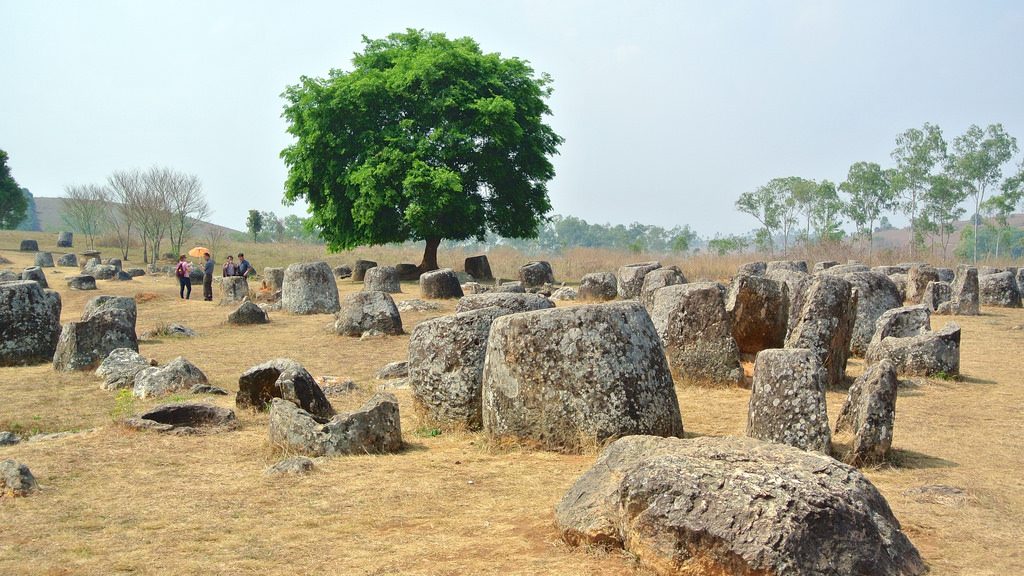
Drive half an hour to one of the most important prehistoric sites in Southeast Asia. These mysterious clusters of giant jars are thought to be about 2,000 years old. Sightseeing here will be a full day and involve walking over uneven terrain. You will visit Site one where there are over 200 jars, and Site two which also allows you to admire the beautiful scenery of the region. There will also be visits to Muang Khoune village, home of the H’mong minority group, and the office of the Mines Advisory Group (MAG), an organisation that helps clear unexploded ordnance that are a remnant of American raids during the Vietnam War.
Plain of Jars: A megalithic archaeological landscape in Laos. It consists of thousands of stone jars scattered around the upland valleys and the lower foothills of the central plain of the Xieng Khouang plateau. The jars are mostly arranged in clusters ranging in number from one to several hundred. The Xieng Khouang Plateau is located at the northern end of the Annamese Cordillera, the principal mountain range of South East Asia. A French researcher in the early 1930s concluded that the jars were associated with prehistoric burial practices. Excavation by Lao and Japanese archaeologists in the intervening years has supported this interpretation with the discovery of human remains, burial goods and ceramics around the jars. The Plain of Jars dates back to the Iron Age (500 BC to 500 AD) and is one of the most important prehistoric sites in Southeast Asia
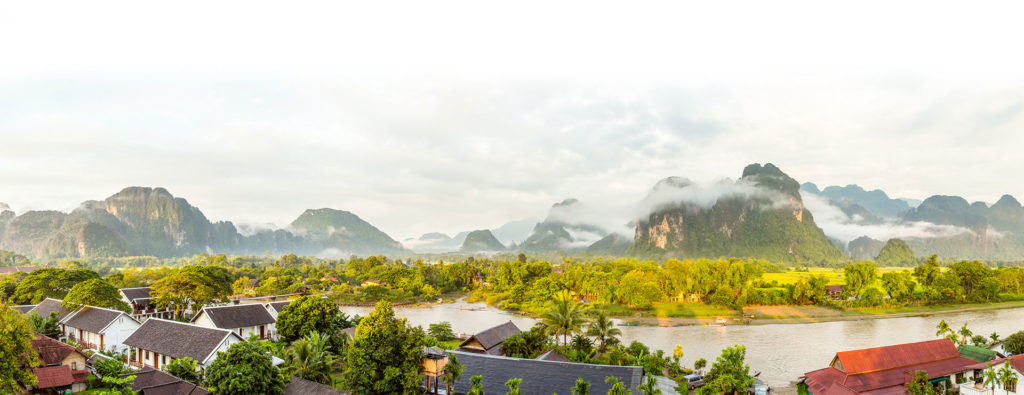
Drive approximately seven hours to Vang Vieng, stopping en route for about one hour at Pathang Village to admire the spectacular views over karst mountain landscapes. Vang Vieng lies on the Nam Song River. The most notable feature of the area is the karst hill landscape surrounding the town. Spend the afternoon exploring the magnificent Tham Chang Cave which involves one hour on foot over uneven surfaces, and climbing steps to reach the cave. Tham Chang is a cave just to the southwest of Vang Vieng, Laos. The cave is reached by crossing a bridge that spans across the Nam Song River. You will need to then climb a long flight of steps to the entrance. A spring is located about 50m inside the cave. The cave was used as a bunker in the early 19th century during the Chinese-Ho invasion.
Overnight in Vang Vieng.

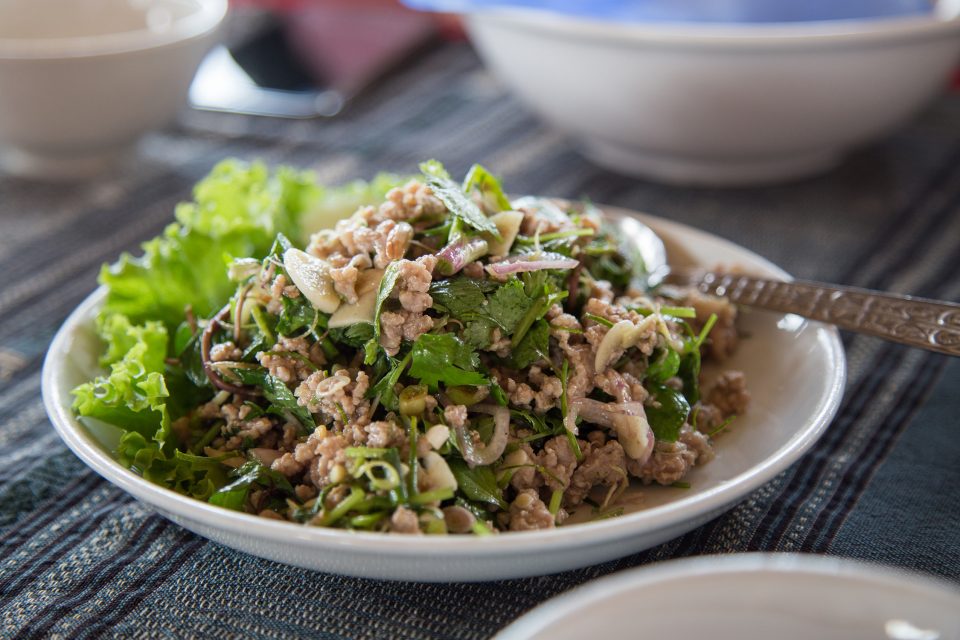
Continue driving three and half hours south to Vientiane, Laos’ capital. Nestled in a languid bend in the Mekong, Vientiane is a delightfully quaint city, more a friendlier backwater than the chaotic capital. Spend the rest of the day exploring with visits to:
Wat Si Saket: Wat Si Saket is a Buddhist wat built in 1818 on the order of King Anouvong (Sethathirath V.) Wat Si Saket was built in the ‘Siamese style’ of Buddhist architecture, with a surrounding terrace and an ornate fivetiered roof, rather than in the Lao style. This may have kept it safe, since the armies of Siam that sacked Vientiane following Anouvong’s rebellion in 1827 used the compound as their headquarters and lodging place. It may be the oldest temple still standing in Vientiane. The French colonial government restored Wat Si Saket in 1924 and again in 1930. Wat Si Saket features a cloister wall with more than 2,000 ceramic and silver Buddha images.
That Luang Stupa: A gold-covered large Buddhist stupa in the centre of Vientiane. Since its initial establishment, suggested to be in the 3rd century, the stupa has undergone several reconstructions as recently as the 1930s due to foreign invasions of the area.
Patuxai Victory Monument: Patuxai means Victory Gate or Gate of Triumph. and, is a war monument in the centre of Vientiane. It was built between 1957 and 1968.
Overnight inVientian.
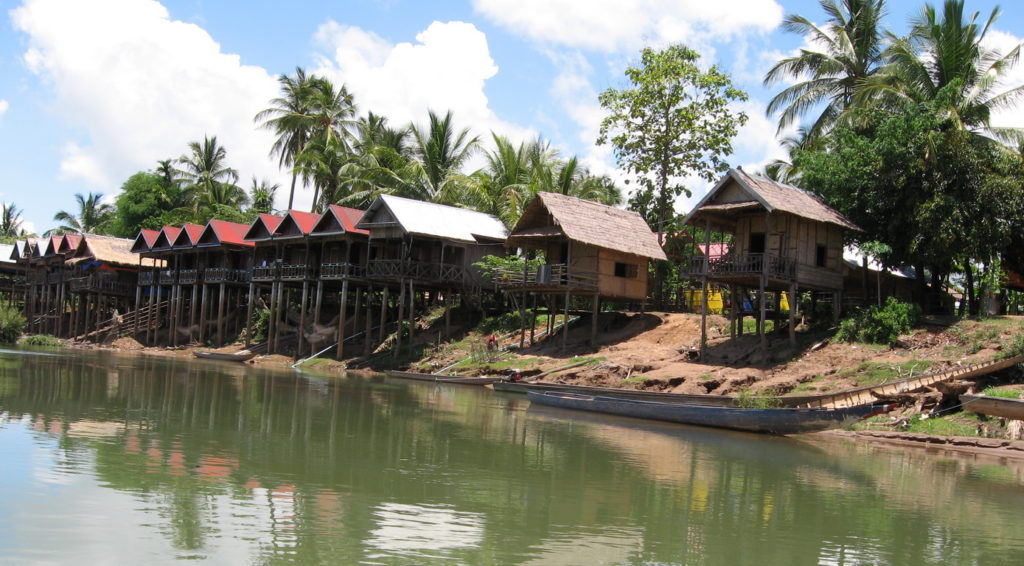
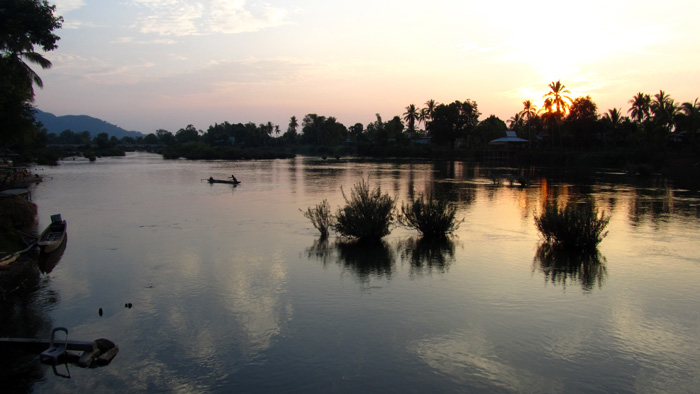
Rise early for a morning flight to Pakse, the flight will be approximately one hour and 15 minutes. On arrival drive to Champassak to visit the World Heritage-listed Wat Phou, a ruined Khmer Hindu temple complex in southern Laos. It is located at the base of mount Phu Kao, some six kilometres from the Mekong River in Champassak province. There was a temple on the site as early as the 5th century, but the surviving structures date from the 11th to the 13th centuries. The temple has a unique structure, in which the elements lead to a shrine where a linga dedicated to Lord Shiva was bathed in water from a mountain spring. The site later became a centre of Theravada Buddhist worship.
Continue to Khong Island, the largest island of the Si Phan Don archipelago in the Mekong River. The afternoon is at leisure.
Overnight in Khong Island.
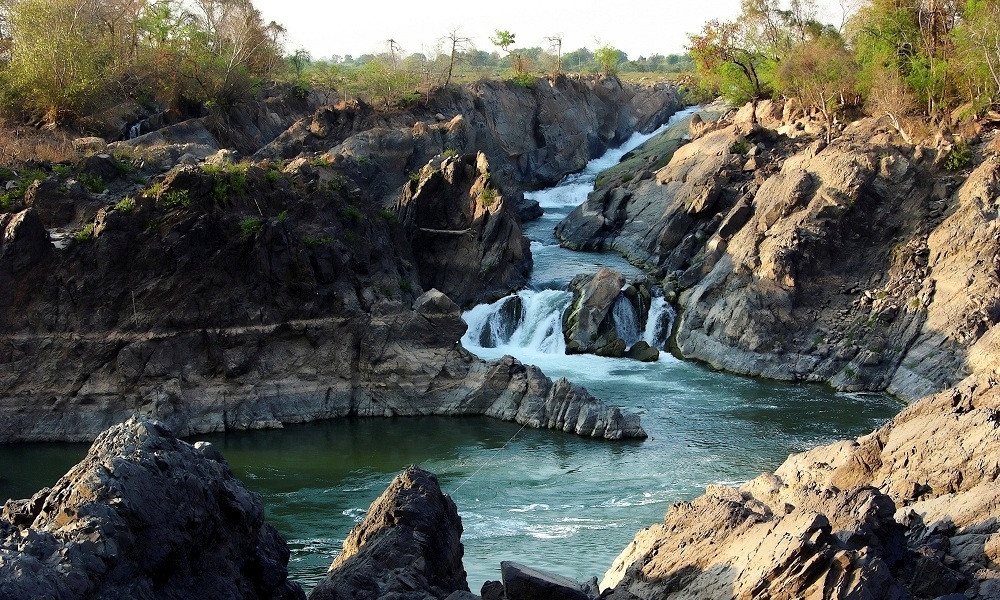
Around Si Phan Don, meaning ‘4,000 islands’, the pace of life is slow and easy and the river views are gorgeous. See the magnificent Khone Phapheng Waterfall and pop over to Khone Island to discover its charming colonial buildings and see Liphi Waterfall, nicknamed the Devil’s Corridor. Depending on the season, you may see local fisherman in action. The rest of the day is at your leisure.
Khone Phapheng Waterfall: The largest in Southeast Asia and the main reason the Mekong is not fully navigable into China. The fall is characterized by thousands of islands and countless waterways, giving the area its name Si Phan Don or ‘The 4,000 islands’.
Liphi Waterfall: nicknamed the Devil’s Corridor, a roaring collection of powerful falls spilling down at odd angles along a branch of the characteristically coffee-colored Mekong River.
Overnight in Khong Island.
Drive two hours from Khong Island to Pakse, stopping to admire Tad Yuan and Tad Fane waterfalls as you go. Tad Fane is a set of twin 120m-high waterfalls formed by the merging waters of the Champy and Pak Koot rivers. These impressive falls are situated on the edge of Dong Hua Sao protected wildlife area, 38km from Pakse. Continue on to the Bolaven Plateau (located in an ancient volcano that erupted millions of years ago, the area spans 50km of southern Laos most vegetated area. From an altitude of 800 and 1350m it is green all year round and cooler than the rest of Laos and Thailand) to pay a visit to a coffee plantation and learn about the process of planting, harvesting and roasting the beans.
Overnight in Pakse.
After breakfast, the driver and private car will be waiting at the hotel to take you to the airport for your flight home.
We’re here to help! Our dedicated experts will support you 1:1 in planning and on the trip!
Don’t want to fill the form? Please contact our hotline at +84 984.368.606
Included/Excluded
- Accommodation at selected hotels with daily breakfast (Check in time: 14.00; Check out time: 12.00)
- Meals as stated in the itinerary (B: Breakfast ; L: Lunch ; D: Dinner)
- Private air-conditioned vehicles for all tours and airport transfers
- Private English Speaking tour guides in each city of visit.
- Entrance fees to scenic spots as listed in the itinerary
- Regional Flights within the trip
- All bank fee and service charge
- Governmental taxes
- Travel Insurance
- Entry visa stamping fees; Laos ($30/pp)
- International flight tickets from and to this region
- Meals, drinks and other those mentioned in the itinerary
- Laundry, telephone calls and expenditure of a personal nature
- Peak season or Public holidays surcharge if any
- Compulsory Gala dinner on X-Mas or New Year if any
- Tips and gratuities
- Early Check in or Late Check Out
- Other services not mentioned above
Useful Information
What you are reading here is just a sample itinerary. Your interest decides how your trip will look like. All of our tour is private so you can always adjust any details until it matches your wish...Authentic
- Your itinerary is 100% tailor-made for you.
- Your entire journey is made at your own pace.
- Unique experiences are designed to match your interests.
Asia-Based
- Our Asia-based specialists maintain current first-hand knowledge.
- Well-trained professional local guides.
- Our reliable travel consultant supports you 24/7.
Trusted
- We prioritize your safety above anything else.
- We pride ourselves in our honesty and commitment to your travel.
- We are a 100% fully registered and privately-owned Vietnamese company.


